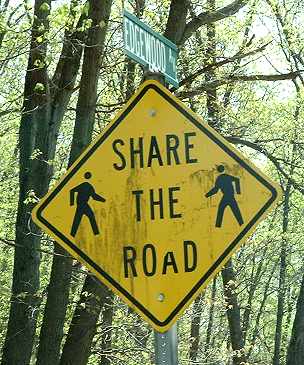In other words, what may have once been an indication of a sidewalk parallel to the roadway (as in highway=footway footway=sidewalk) has been muddled to mean only that there’s something sidewalk-like somewhere in relation to the roadway, maybe even in the middle of it. That leaves us in an unfortunate quandary, where the key doesn’t mean what it says on its face, “side” can mean “inside” instead of “beside”, and the most obvious workaround is tantamount to sidewalk:both=yes_really. ![]() Imagine if, in a parallel universe, we had wound up with a
Imagine if, in a parallel universe, we had wound up with a cycle_track=* key before recognizing that bike lanes are a thing and belatedly stuffing it into cycle_track=lane.
The purist in me, who occasionally visits this forum, would contend that the solution would be to clarify an actual, physically separate sidewalk on the right side as footway:right=sidewalk, adding sidewalk:right=separate if it’s already mapped as a separate way. But the pragmatist in me would counter that footway:right=sidewalk would already be implied by sidewalk:*=yes/separate and would only be necessary in areas where the term sidewalk has been overloaded.
Following this approach, a pedestrian lane would be footway:right=lane, and you could even pair that with sidewalk:right=separate if you’ve mapped the pedestrian lane as a separate way for some reason. This opens up more possibilities than the alternative of overloading sidewalk=*. In the U.S., we have a need for this additional flexibility.
In some localities, pedestrians are legally required to walk on the left, facing traffic. The following sign is typically posted in these cases. I think sidewalk=opposite would be awkward compared to footway=opposite or footway=opposite_lane, which is at least consistent with cycleway=opposite/opposite_lane:
footway=shared is more intuitive than sidewalk=shared for a (nonstandard) “Share the Road with Pedestrians” sign:

A sidewalk extension could be footway:right=lane;sidewalk, at least until the authorities treat it as a parking lane, rendering it unusable. Better than sidewalk:right=lane;yes in any case. This sidewalk extension was newly installed in New York City, where electric scooters are banned from sidewalks but not roadways:
